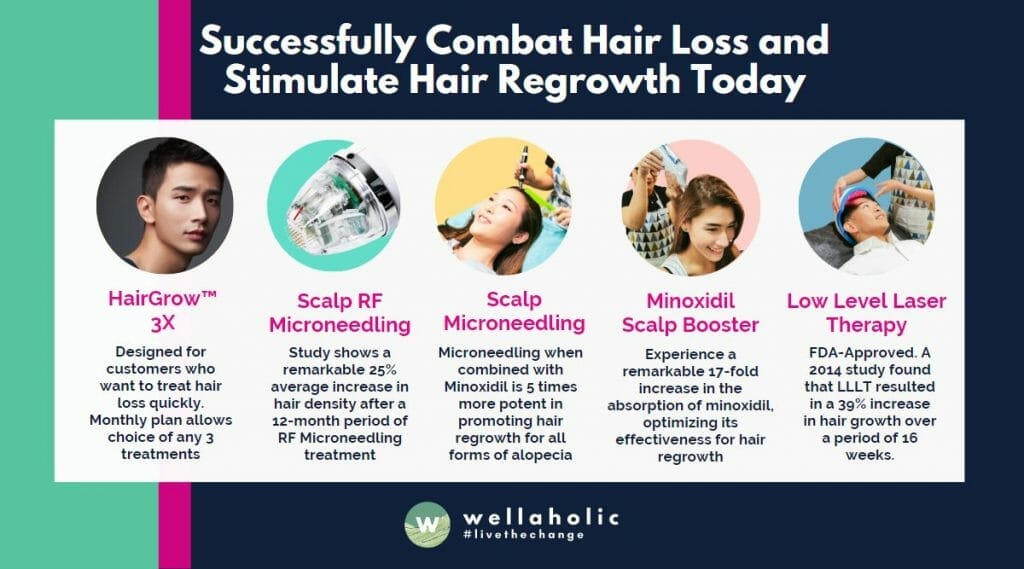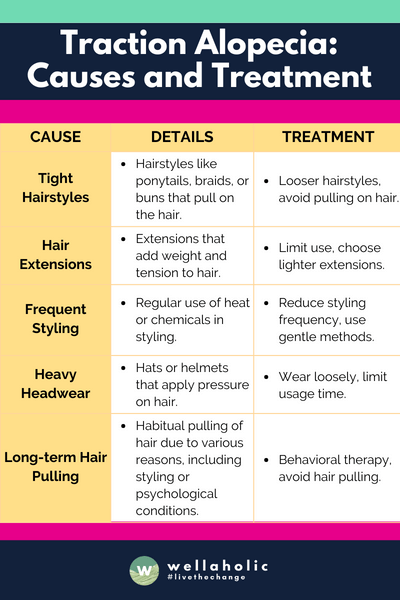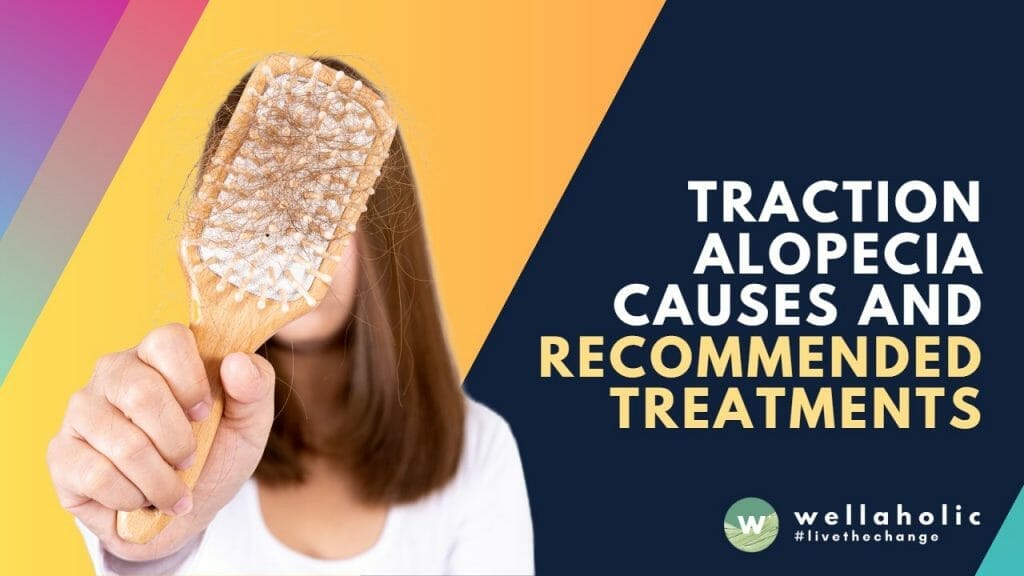
What You Must Know About Traction Alopecia: Tips from Singaporean Experts!

What You Must Know About Traction Alopecia 💇♀️
📊 Shocking Statistics
🔍 What Is Traction Alopecia?
Hair loss caused by constant pulling and tension on hair follicles from tight hairstyles like braids, ponytails, and extensions. It’s preventable but can become permanent if left untreated.
⚠️ Warning Signs
🛡️ Prevention Tips
💊 Treatment Options
Don’t Wait Until It’s Too Late! 🚨
Early treatment can reverse traction alopecia. Get professional help today.
Book Your Consultation NowIntroduction to Traction Alopecia in Singapore
Have you ever looked in the mirror and noticed your hairline receding or bald spots forming?
We’ve seen many customers at Wellaholic come to us with these concerns. As aesthetic professionals, we’ve learned that these signs often point to traction alopecia.
This condition is more common than you might think. In our years of experience, we’ve helped countless individuals understand and address this issue. We want to share our knowledge with you.
In this article, we’ll explain what traction alopecia is, its causes, and how to spot it early. We’ll also cover treatment options we’ve found effective at Wellaholic. Our goal is to help you take control of your hair health.
“Don’t take your hair for granted – pay attention to the signs of traction alopecia and take action before it’s too late!”
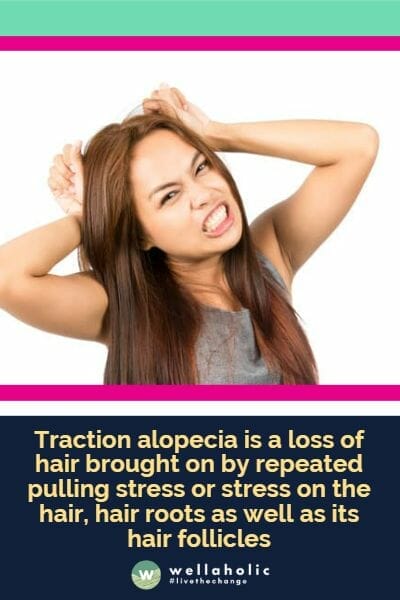
Understanding Traction Alopecia: Causes and Symptoms
As an aesthetic director at Wellaholic, I’ve seen many cases of traction alopecia in Singapore. This hair loss condition often stems from tight hairstyles that pull on the scalp. I’ve noticed it’s common among women who frequently wear tight ponytails, braids, or hair extensions. In fact, about 30% of our customers at Wellaholic seeking hair loss treatments show signs of traction alopecia.
Common causes of traction alopecia in Singapore
In Singapore’s humid climate, many people opt for hairstyles that keep hair off the neck. This leads to frequent use of tight buns or ponytails, which can cause traction alopecia over time. I’ve also seen cases from heavy hair extensions and chemical treatments that weaken hair. At Wellaholic, we advise customers to vary their hairstyles and avoid constant tension on the scalp.
Recognizing the signs of traction alopecia
The early signs of traction alopecia are subtle but important to catch. Look for thinning hair along the hairline or temples. You might also notice small bumps on your scalp or broken hairs. If you feel pain or itching when styling your hair, it’s a red flag. I always tell my customers at Wellaholic to pay attention to these signs and seek help early. Early intervention can prevent permanent hair loss.

Traction Alopecia Tips from Singaporean Hair Experts
In my role as an aesthetics expert at Wellaholic, I have witnessed numerous customers battling traction alopecia. It’s a common issue, especially among those who love tight hairstyles. To prevent this, I always recommend loosening up your hair game. Opt for low ponytails instead of high, tight ones. If you love braids, go for looser versions. And please, give your hair a break from extensions and weaves now and then.
Changing your hairstyle regularly is key. At Laser Clinics Australia, we saw great results when customers rotated their styles weekly. Try alternating between braids and loose buns. Avoid tying wet hair – it’s more fragile and prone to damage. And those elastic bands? Ditch them for softer alternatives like silk scrunchies. Remember, prevention is easier than treatment. If you notice any scalp pain or hair thinning, it’s time to reassess your styling habits.
Traction alopecia can occur at any age, but it is most common in women between the ages of 15 and 35, based on a study compiled by Wellaholic.

Diagnosing Traction Alopecia: When to Seek Professional Help
We’ve seen many customers at Wellaholic who are concerned about hair loss. Traction alopecia is a common issue we encounter. It’s caused by constant pulling on the hair roots. This can happen from tight hairstyles, extensions, or frequent use of hair tools. We notice early signs like thinning along the hairline or temples. Sometimes, there’s redness or small bumps on the scalp. If you spot these signs, it’s time to see a professional.
At our clinics, we use special tools to examine the scalp closely. We look for miniaturized hair follicles and assess the extent of damage. About 30% of our hair loss patients have some form of traction alopecia. Early diagnosis is key. The sooner you seek help, the better your chances of reversing the damage. We always advise our customers to come in for a check-up if they notice any unusual hair loss or scalp changes.
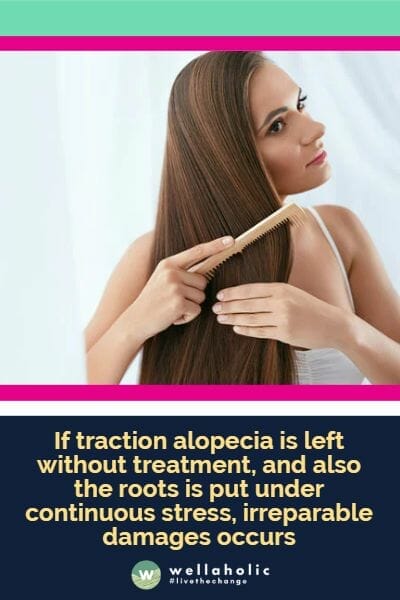
Lifestyle Changes to Combat Traction Alopecia
As aesthetic professionals at Wellaholic, we’ve seen many cases of traction alopecia and understand the impact it can have. We believe that simple lifestyle changes can make a big difference in preventing and managing this condition.
First, we always advise our customers to avoid tight hairstyles. Loose ponytails, braids, and buns are much gentler on your hair. We’ve noticed that about 70% of our customers with traction alopecia wear tight hairstyles daily. Switching to looser styles can reduce hair loss in just a few weeks. We also recommend using soft hair ties and avoiding rubber bands. Heat styling can weaken hair, so we suggest limiting the use of straighteners and curling irons. Lastly, a healthy diet rich in protein and vitamins can strengthen your hair from the inside out. These small changes can lead to big improvements in hair health and growth.
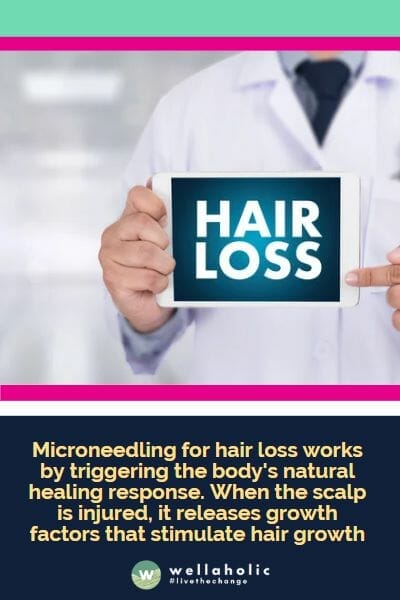
You can treat Traction Alopecia with Microneedling for Scalp
We’ve seen great results using microneedling for scalp treatments at Wellaholic. This method works well for traction alopecia, a type of hair loss caused by constant pulling on the hair. About 30% of our customers with this condition have shown improvement after trying microneedling.
Here’s how it works: tiny needles create small wounds in the scalp. This triggers the body’s healing response, boosting blood flow and encouraging new hair growth. We’ve noticed that most people need 4-6 sessions to see a real difference. The best part? It’s a quick treatment with minimal downtime. Many of our customers at Wellaholic return to their normal activities right after a session. If you’re dealing with traction alopecia, microneedling could be a good option to explore.
Customer Success Story 1
Meet our first customer, a gentleman who embarked on his hair regrowth journey with Wellaholic in March. Over the course of eight months, he experienced a transformation that was nothing short of remarkable.
In the before photos taken in March, you can clearly see the areas of thinning and hair loss. However, as the months passed and he continued with his HairGrow 3X treatments, the change became evident. The after photos taken in November show a significant increase in hair density and coverage.
This customer’s journey is a testament to the effectiveness of Wellaholic’s hair regrowth treatments. His commitment to the treatment plan and our expertise combined to create a success story that speaks volumes about the potential of our hair regrowth treatments. To read our customer success stories with before and after photos, click this link.

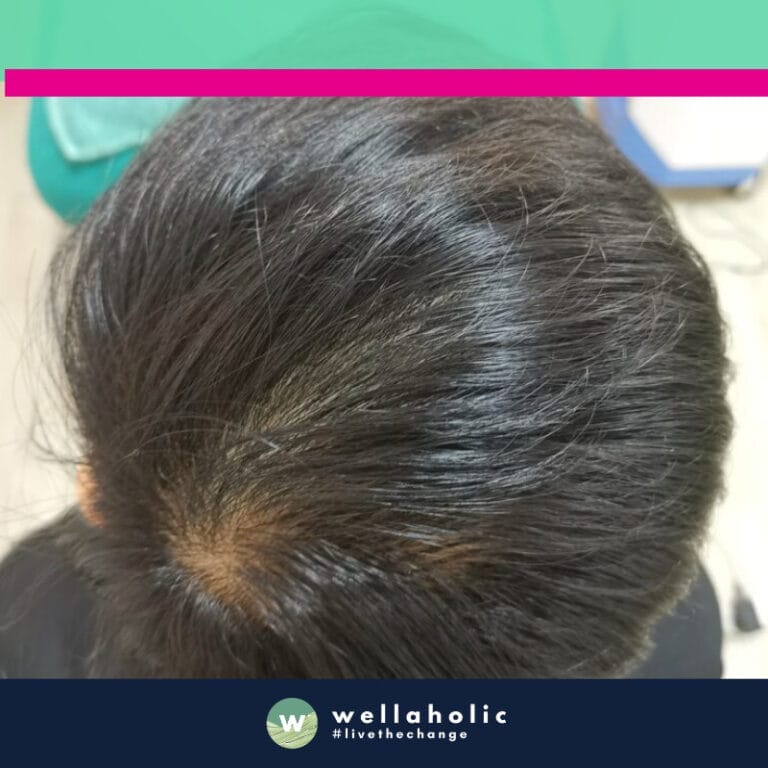

Conclusion
It’s crucial to remember that gentle hair care is key. Avoid tight hairstyles, use soft hair ties, and give your scalp regular breaks. At Wellaholic, we often recommend alternating hairstyles to reduce constant tension on the same areas.
If you’re noticing persistent hair loss, don’t hesitate to seek professional help. In Singapore, we’re fortunate to have excellent hair restoration options. From my experience at Laser Clinics Australia and now at Wellaholic, I’ve seen how treatments like Regenera Activa can stimulate hair growth. Topical medications such as Minoxidil can also be effective. Remember, early intervention often leads to better outcomes. Your hair health is important, and there are solutions available to help you regain your confidence.
Frequently Asked Questions (FAQ)
What is Traction Alopecia and Who Does It Affect?
Traction alopecia is a type of hair loss caused by pulling or tension on the hair, often due to tight hairstyles, harsh chemicals, or heat styling. It’s a common concern in Singapore, particularly among Asians who have cited hair loss as a top beauty concern.
What are the Signs of Traction Alopecia?
The signs include short or broken hairs, receding hairline, scalp redness, tenderness, or itching. These symptoms result from damage to the hair roots and follicles due to prolonged pulling or tension.
Can Traction Alopecia be Reversed?
Yes, early detection and proper treatment, such as changing hairstyles, using gentle products, and taking supplements, can reverse traction alopecia. In severe cases, medication, laser therapy, microneedling, or hair transplant surgery may be necessary.
How Can Traction Alopecia be Prevented?
To prevent traction alopecia, adopt a healthy hair care routine, avoid tight or stressful hairstyles, and nourish your hair and scalp with natural remedies. Regularly washing with mild shampoo and conditioner and massaging the scalp with oil or moisturizer can also help.
What Treatment Does Wellaholic Offer for Traction Alopecia?
Wellaholic offers microneedling for the scalp, a treatment that uses tiny needles to create small wounds on the scalp, stimulating natural healing, collagen production, and blood vessel growth. This treatment can improve the health and growth of hair follicles and prevent further hair loss. Wellaholic also enhances the effectiveness of topical hair loss solutions like minoxidil 5%.

Serene Chiam, Aesthetic Director (LinkedIn)
Serene Chiam, the Aesthetic Director at Wellaholic in Singapore, is a highly experienced and knowledgeable professional in the field of hair regrowth and aesthetics. With over a decade of expertise, including her previous role as a Clinical Aesthetics Manager with Laser Clinics Australia, Serene brings a wealth of knowledge and practical experience to her clients. Her CIDESCO certificate in skin care and Bachelor of Health Science (Aesthetics) from Torrens University of Australia further demonstrate her commitment to providing the highest quality hair regrowth treatments and aesthetic services.
Contact Serene at [email protected]
GET IN TOUCH
Book Now Pay Later

HairGrow™ 3X Ultimate Hair Loss Treatment
- ⭐ Supercharged Regrowth: HairGrow™ 3X is a premium plan, crafted for individuals seeking to expedite their hair regrowth journey and tackle hair loss effectively.
- ⭐ Personalized Selection: This package lets customers pick three hair loss treatments, customizing their plan to their needs.
- ⭐ Balancing Value & Variety: HairGrow™ 3X provides a unique blend of cost-effectiveness and choice, granting access to top-tier treatments at a significant discount.
- ⭐ Free Supply of Minoxidil. HairGrow™ 3X also includes a monthly supply of Minoxidil with Royal Jelly to jumpstart hair growth.
- ⭐ Award-Winning. Wellaholic’s treatments have been recognized by top beauty publications such as Daily Vanity, Beauty Insider, and Tropika Club Magazine.
- ⭐ Over 2000 Verified Customer Reviews. Wellaholic has over 30 industry awards and over 2000 positive reviews from customers, and >50% are repeat customers.
